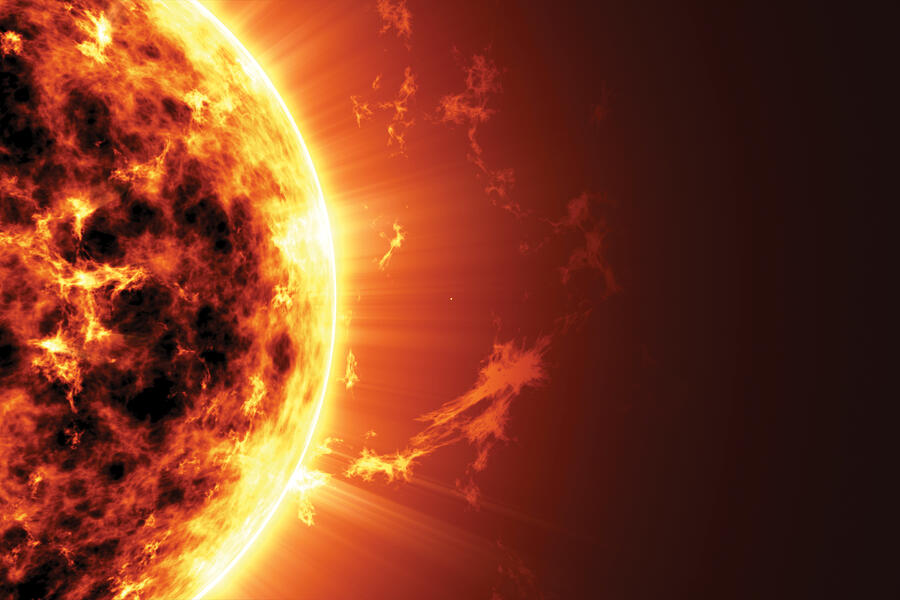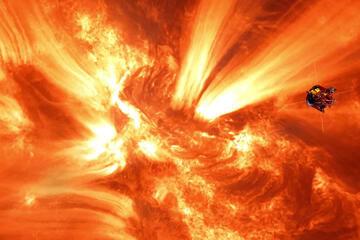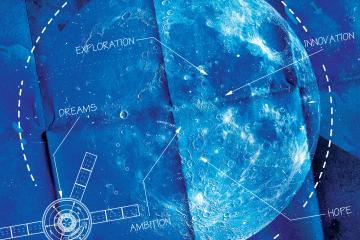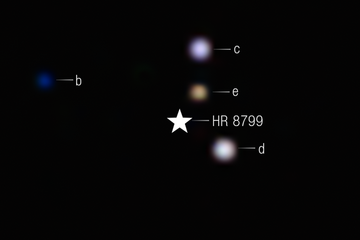The sun rises and sets every day. We plan our lives around it. It's ironic, then, that "we know so little about the star at the center of our solar system," says Matina Gkioulidou, a space physicist at the Johns Hopkins Applied Physics Laboratory. "The sun warms our bodies, brightens our days, and makes life possible, but it's largely a mystery."
Gkioulidou started studying our solar system's star, made mostly of hydrogen and helium, years ago as a physics major in sun-drenched Greece, her home country. Today, she serves as the project scientist of a NASA mission to investigate the sun's particles and map their energy across the entire heliosphere, which is the region of space affected by the sun—essentially, our entire solar system and its outer reaches.
"The heliosphere [encompasses] everything under the sun's influence," Gkioulidou explains. "It's a gigantic magnetic bubble that contracts and expands, protecting the planets in our solar system from the harmful, high-energy particles and radiation from outside of our solar system."
The mission, led by Princeton Professor David J. McComas and known as the Interstellar Mapping and Acceleration Probe, or IMAP, involves a spacecraft built at APL in partnership with scientists and engineers from 25 institutions worldwide. As early as this September, NASA says, the spacecraft will launch from Cape Canaveral, Florida, and soar a million miles toward the sun to Lagrange point 1, where Earth's gravity balances out the sun's gravity and it takes less fuel to hover a spacecraft.
There, the spacecraft's 10 instruments, designed and built by the team, will acquire data about the continuous stream of particles emitted by the sun in every direction. "It's unusual for a spacecraft to launch with 10 different instruments— usually, they launch with two or three," Gkioulidou says. "But with this suite of instruments, we'll get an unprecedented look at the charged and uncharged particles of different energies streaming from the sun near Earth and far, far away, at the outer edges of the heliosphere." There, the sun's influence wanes and interacts with the interstellar medium beyond our solar system.
Little is known about this mysterious confluence of forces located roughly 11 billion miles from the sun. Scientists refer to this as interstellar space, or the area between stars. More specifically, it's the region between our sun's heliosphere and the atmospheres of other stars, where our sun's highly charged and fast-moving particles collide with a stew of gas, dust, and cosmic rays from our celestial neighbors.
"This interaction creates the protective bubble, or shield, for our solar system," Gkioulidou says. "We couldn't exist without it."
NASA's Voyager 1 and 2, which launched in 1977 and still fly today, became the first human-made objects to cross into interstellar space and uncover the supersonic solar wind that blows there. Made of ionized plasma, solar wind whooshes around the vast region at speeds of up to 1.5 million miles per hour. "The wind helps form the protective shield," Gkioulidou says.
Although the IMAP spacecraft won't fly to the heliosphere's edges, its instruments will measure from afar the solar wind's charged particles. In doing so, Gkioulidou says, "they'll offer [a trove of] data about a place that holds clues to our existence and how we can sustain ourselves, as well as clues to the role of stars in the billions of solar systems beyond our own."
But IMAP will also examine the sun's particles streaming closer to Earth. "Some particles are slow-moving, while others are fast-moving and high-energy, including the solar wind that blows [nonstop] and produces events like geomagnetic storms, which you can think of as plasma hurricanes." These solar storms trigger aurora displays that light up the sky in vibrant greens. They can also wreak havoc on Earth's technological infrastructure.
Also see
More than 10,000 satellites orbit Earth right now. Flying at roughly 17,000 miles per hour, these devices make it possible, say, to communicate in real time, search the internet, and monitor everything from weather and climate change to military maneuvers and natural disasters.
"When the sun gets really active, it emits explosions of plasma from the sun's atmosphere—what we call the corona—into the heliosphere," Gkioulidou explains. "Some of these eruptions can include high-energy particles, which can harm the satellites we rely on daily."
In 2024, for instance, solar flares caused radio blackouts above parts of the Atlantic and Pacific oceans and Africa. Similarly, in 2022, a solar storm knocked out over 40 Starlink satellites that provided high-speed internet.
Today, the world depends on electricity and technology more than ever, and scientists fear that a massive solar flare could bring catastrophic consequences. Plus, with plans for NASA and other space agencies to send astronauts to the moon and Mars, "we need to understand how these particles interact so we can predict space weather and protect astronauts outside of Earth's magnetic field, which protects us from the dangerous radiation that can penetrate the body, alter DNA, and cause cancer," Gkioulidou says.
With IMAP, Gkioulidou anticipates predicting space weather almost in real time. "It will take about five minutes for the data to reach us on Earth," she says, "and NASA is setting up ground stations worldwide to receive and broadcast it," enabling us to see the sun and its effects—including its stunning auroras—in an entirely new light.
Posted in Science+Technology
Tagged space exploration, nasa, apl











